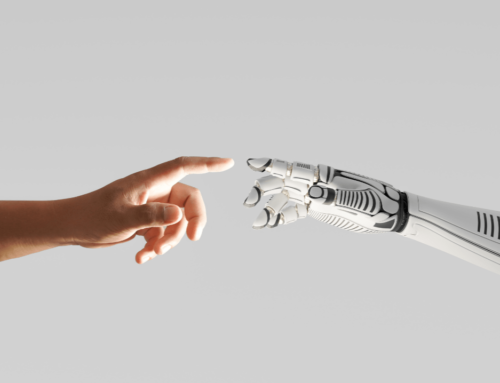As new technologies emerge and existing ones improve, we’re always creating new defenses against cyber criminals. Just as fast as we develop defenses, however, they learn to use these same new tools to crack them.
Artificial Intelligence (AI) is no exception.
As the benefits add up, many companies have adopted AI features to help run their business, yet many haven’t acknowledged the added risk AI may create. For any solid cybersecurity strategy, it’s important to understand the benefits and weaknesses of all technologies you use.
How AI Helps Protect Us
There’s no question that artificial intelligence and machine learning can automate complicated tasks, making themselves indispensable in today’s industry and economy. When effectively paired with cybersecurity strategies, AI can be a crucial part to any risk mitigation plan.
Machine learning (one type of AI) and threat intelligence can analyze data to determine past mistakes and improve with new, enhanced defense strategies, enabling systems to constantly improve and keep up with changing threats.
AI also allows analysts to respond to threats up to 60 times faster by identifying relationships between threats, suspicious IP addresses, and other factors to determine patterns. AI also speeds up required research or analysis tasks, providing needed data almost instantly so security analysts can make timely, critical decisions.
AI allows us to identify and rectify threats in minutes or even seconds – threats that we might have otherwise missed completely. It understands vulnerabilities, learns from patterns, and provides truly secure authentication.
These qualities, combined with its ongoing ability to learn and improve, make AI and related tech absolutely essential in today’s fight against cyber crime.
How Cyber Criminals Use AI Against Us
Fortunately, cyber attacks that use machine learning are rare, but their complexity and sophistication mean they can probe even deeper than traditional cyber attacks, causing far more damage.
“It’s possible that by using machine learning, cyber criminals could develop self-learning automated malware, ransomware, social engineering or phishing attacks,” according to ZDNet.
Password-guessing AI can analyze millions of leaked passwords to identify patterns and narrow down the possible options much faster than the standard “brute force” method. AI can also help a hidden malicious payload know when to launch, based on indicators like voice, facial recognition, or geolocation. Poor cybersecurity surrounding open-source models may also create new opportunities for hackers to access critical information.
AI can also learn human behavior, patterns in identifying information, and other private information to assume someone’s identity or create a new, trustworthy entity for malicious purposes. Like we discussed in our webcam security post, once hackers know some of your personal information, they can wreak havoc.
“We need to study how AI can be used in attacks, or we won’t be ready for them,” says Stevens Institute of Technology Chair Giuseppe Ateniese.
The Arms Race
As the AI “arms race” continues, cyber analysts are indeed studying the ways AI, machine learning, and deep learning could be used maliciously in the future. This preparation and awareness will dramatically improve our ability to respond to attacks as they develop.
For more information about AI by downloading the full AI guide below!





